 Located north of Perak state, Malaysia, Belum Valley covers 300,000 hectares of pristine rainforest known as Belum Temenggor Forest Complex (BTFC) and consist of several forest reserves area. The main area are the Royal Belum (north), Temenggor Forest Reserve (south), Gerik Forest Reserve and Bersia Forest Reserve.
Located north of Perak state, Malaysia, Belum Valley covers 300,000 hectares of pristine rainforest known as Belum Temenggor Forest Complex (BTFC) and consist of several forest reserves area. The main area are the Royal Belum (north), Temenggor Forest Reserve (south), Gerik Forest Reserve and Bersia Forest Reserve.
The contiguous Belum and Temenggor forest reserves form the second largest remaining block of virgin forest in Peninsular Malaysia and the largest example of the northern monsoonal Burmese-Thai forest vegetation zone (Bamboo-Schima) in Malaysia. These forests are approximately 130 million years old, older than the Amazon and the Congo, and subsequently much more complex in their biodiversity. They support populations of large mammals and extensive stands of mixed dipterocarp forests over about 300,000 hectares, almost four times the size of Singapore, in one of the least accessible or developed areas of the Peninsula.
The Belum-Temengor Forest Complex forms the last remaining contiguous tract of forest in Peninsular Malaysia that is: i) currently outside
the National protected area system and ii) that is sufficiently large to support the huge diverse range of flora and fauna for which Malaysia is recognised as one of only twelve mega-biodiversity countries in the world. The outstanding value of the BT Complex is a large landscape ecosystem, supporting large mammal populations such as Asian Elephant, Sumatran Rhinoceros, Malayan Tiger, Malayan Gaur (Seladang), Leopard and Tapir. These populations desperately need large forest areas to survive, and the BT Forest Complex is the last such refuge left in Malaysia. It is also recognized internationally as an Important Bird Area (IBA).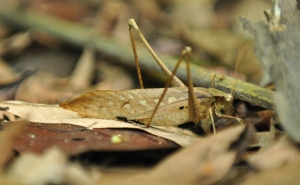
With Taman Negara representing the biodiversity of central Peninsular Malaysia, Endau-Rompin with its West Borneo influence representing the southern end, the BT Forest Complex is the last major tract for the northern flora and fauna. Its protection will mark the fulfilment of our national obligation to the Convention on Biological Diversity (CBD), and presents an excellent chance to establish a transboundary Protected Area (PA) together with the Hala-Bala wildlife Sanctuary and the Bang Lang National Park in Thailand.
BIOLOGICAL DIVERSITY OF THE BT COMPLEX
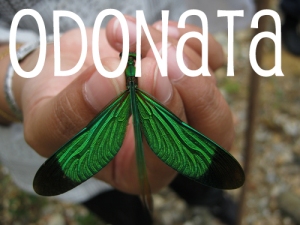 Supports important keystone flora and fauna species: Over 3,000 species of flowering plants, many endemic to just the northern Peninsula, including 46 species of palms (15 endemic) and over 30 species of gingers (20% of the total number of Peninsula species), and a variety of rare orchids.
Supports important keystone flora and fauna species: Over 3,000 species of flowering plants, many endemic to just the northern Peninsula, including 46 species of palms (15 endemic) and over 30 species of gingers (20% of the total number of Peninsula species), and a variety of rare orchids.
At least 274 species of birds and it must be noted that the entire BT Complex area has all 10 hornbills of Malaysia, with perhaps the largest remaining populations of breeding hornbills. It was recorded that at least 2, 000 Plain-pouched Hornbills were seen flying in just one evening.
- 168 species of butterflies, including the rare Herona sumatrana and Tanaecia clathrata and 252 smaller moths
- 95 identified species of leaf-beetles, with the highest likelihood that there are many more
- 64 species of ferns and fern allies
- 62 species of mosses
- 51 species landsnails (one sixth of all known Peninsular Malaysian snail species)
- 49 species of terrestrial and seven freshwater molluscs
- 36 species of aquatic and semi-aquatic bugs, and a new aquatic fly
- 25 species of cicadas
- 24 species of amphibians
- 21 species of lizards
- 23 species of snakes
- 23 species of freshwater fishes
- 19 species of odonatas
- 7 species of freshwater and land turtles. At least five and one globally threatened and near-threatened turtles and tortoises.
- 3 species of freshwater decapod crustaceans
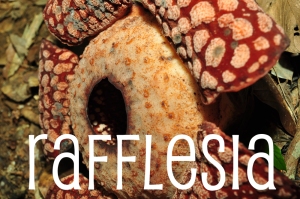 BT Forest Complex contains a range of forest types characteristic of the northern monsoonal Burmese-Thai forest vegetation zone: Hill Dipterocarp Forest, Ridge Forest, and Edaphic and Montane Forest. The forests contain over 3,000 species of flowering plants, many endemic to just the northern part of the Malay Peninsula, including the 3 species of Rafflesia, 46 species of palms (15 endemic), over 30 species of gingers, rare limestone flora and many others.
BT Forest Complex contains a range of forest types characteristic of the northern monsoonal Burmese-Thai forest vegetation zone: Hill Dipterocarp Forest, Ridge Forest, and Edaphic and Montane Forest. The forests contain over 3,000 species of flowering plants, many endemic to just the northern part of the Malay Peninsula, including the 3 species of Rafflesia, 46 species of palms (15 endemic), over 30 species of gingers, rare limestone flora and many others.
It has an extraordinary megafauna: 100 mammal species occur, among them almost all the large species of the Malay Peninsula: Malayan Tiger, Malayan Tapir, Asian Elephant, Sumatran Rhinoceros, Gaur, Malayan Sun Bear and Wild Dog. Two are critically endangered: Sumatran Rhinoceros and Malayan Water Shrew. Important salt licks – damp mineral soil areas —attract dense populations of big mammals. It is also an exceptional site for birds; in all, 316 bird species are known so far, in particular all 10 of Malaysia’s magnificent hornbill species, for which it is
probably the world’s richest site. The reptile, amphibian and freshwater fish fauna are equally impressive
INDIGENOUS COMMUNITY
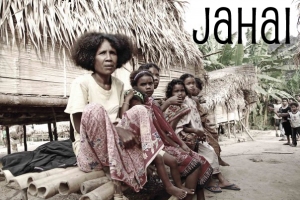 The forests are home to many groups of indigenous people, the Orang Asli especially those from the Jahai and Temiar group. In the Temengor and Belum are, there are nine main Orang Asli village, with about 260 households. The biggest settlement is at Kampung Samlor and Sungai Tekam, two villages that are hardly separable, that contain one fifth of all the households. They settled near the edges of the forest around Temengor Lake, where they have been shifted because of impoundment for the hydro-electric dam in the late 1970s. These forest communities are an integral part of the wilderness, and also form part of the area’s key values.
The forests are home to many groups of indigenous people, the Orang Asli especially those from the Jahai and Temiar group. In the Temengor and Belum are, there are nine main Orang Asli village, with about 260 households. The biggest settlement is at Kampung Samlor and Sungai Tekam, two villages that are hardly separable, that contain one fifth of all the households. They settled near the edges of the forest around Temengor Lake, where they have been shifted because of impoundment for the hydro-electric dam in the late 1970s. These forest communities are an integral part of the wilderness, and also form part of the area’s key values.
Filed under: Activity, Animals, Herbs, Insects, Orang Asli Village, Plants, Rafflesia, Salt Licks, Waterfalls | Leave a comment »












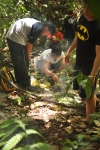

















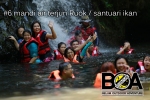


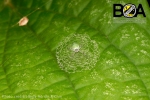
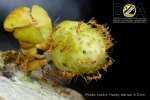
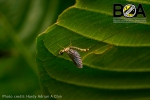
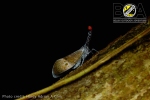
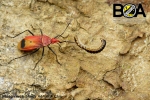

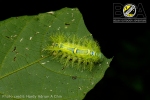
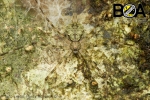
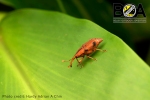






























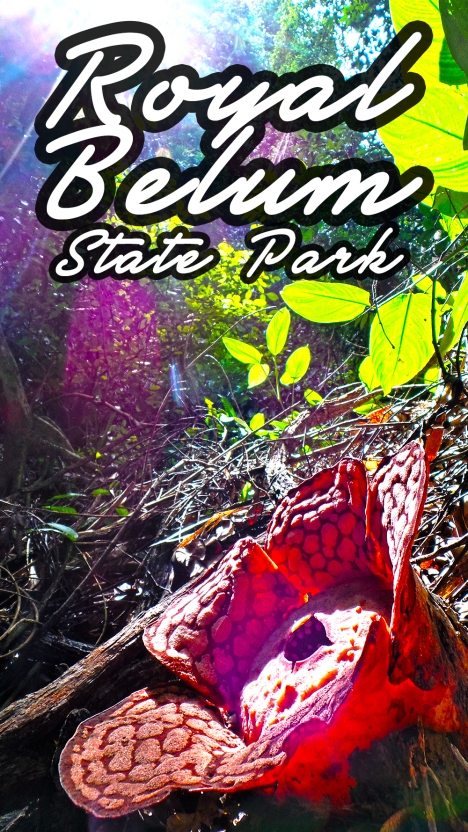

 Located north of Perak state, Malaysia, Belum Valley covers 300,000 hectares of pristine rainforest known as Belum Temenggor Forest Complex (BTFC) and consist of several forest reserves area. The main area are the Royal Belum (north), Temenggor Forest Reserve (south), Gerik Forest Reserve and Bersia Forest Reserve.
Located north of Perak state, Malaysia, Belum Valley covers 300,000 hectares of pristine rainforest known as Belum Temenggor Forest Complex (BTFC) and consist of several forest reserves area. The main area are the Royal Belum (north), Temenggor Forest Reserve (south), Gerik Forest Reserve and Bersia Forest Reserve.
 Supports important keystone flora and fauna species: Over 3,000 species of flowering plants, many endemic to just the northern Peninsula, including 46 species of palms (15 endemic) and over 30 species of gingers (20% of the total number of Peninsula species), and a variety of rare orchids.
Supports important keystone flora and fauna species: Over 3,000 species of flowering plants, many endemic to just the northern Peninsula, including 46 species of palms (15 endemic) and over 30 species of gingers (20% of the total number of Peninsula species), and a variety of rare orchids. BT Forest Complex contains a range of forest types characteristic of the northern monsoonal Burmese-Thai forest vegetation zone: Hill Dipterocarp Forest, Ridge Forest, and Edaphic and Montane Forest. The forests contain over 3,000 species of flowering plants, many endemic to just the northern part of the Malay Peninsula, including the 3 species of Rafflesia, 46 species of palms (15 endemic), over 30 species of gingers, rare limestone flora and many others.
BT Forest Complex contains a range of forest types characteristic of the northern monsoonal Burmese-Thai forest vegetation zone: Hill Dipterocarp Forest, Ridge Forest, and Edaphic and Montane Forest. The forests contain over 3,000 species of flowering plants, many endemic to just the northern part of the Malay Peninsula, including the 3 species of Rafflesia, 46 species of palms (15 endemic), over 30 species of gingers, rare limestone flora and many others.
 The forests are home to many groups of indigenous people, the Orang Asli especially those from the Jahai and Temiar group. In the Temengor and Belum are, there are nine main Orang Asli village, with about 260 households. The biggest settlement is at Kampung Samlor and Sungai Tekam, two villages that are hardly separable, that contain one fifth of all the households. They settled near the edges of the forest around Temengor Lake, where they have been shifted because of impoundment for the hydro-electric dam in the late 1970s. These forest communities are an integral part of the wilderness, and also form part of the area’s key values.
The forests are home to many groups of indigenous people, the Orang Asli especially those from the Jahai and Temiar group. In the Temengor and Belum are, there are nine main Orang Asli village, with about 260 households. The biggest settlement is at Kampung Samlor and Sungai Tekam, two villages that are hardly separable, that contain one fifth of all the households. They settled near the edges of the forest around Temengor Lake, where they have been shifted because of impoundment for the hydro-electric dam in the late 1970s. These forest communities are an integral part of the wilderness, and also form part of the area’s key values.



